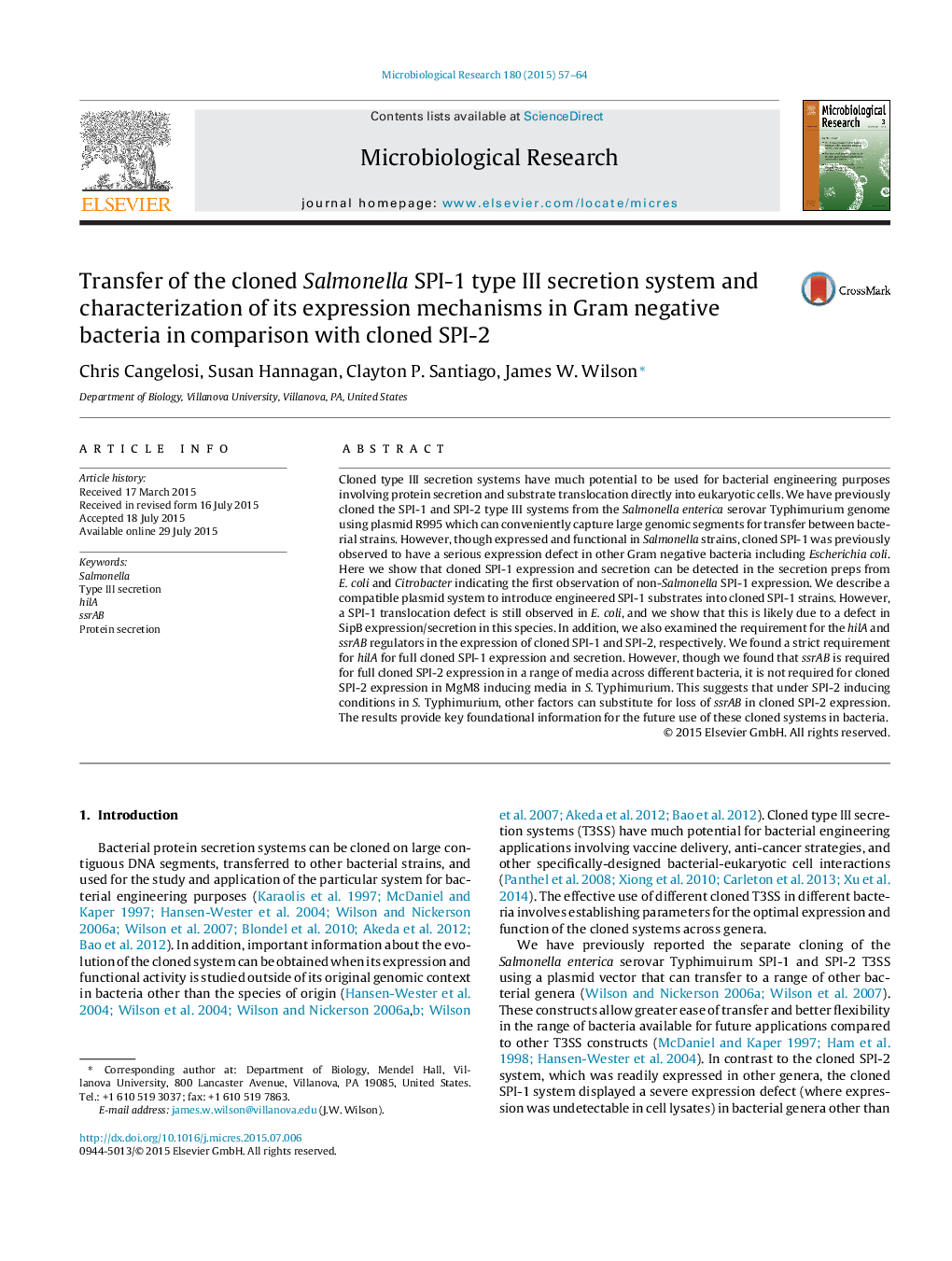| Article ID | Journal | Published Year | Pages | File Type |
|---|---|---|---|---|
| 2091974 | Microbiological Research | 2015 | 8 Pages |
Cloned type III secretion systems have much potential to be used for bacterial engineering purposes involving protein secretion and substrate translocation directly into eukaryotic cells. We have previously cloned the SPI-1 and SPI-2 type III systems from the Salmonella enterica serovar Typhimurium genome using plasmid R995 which can conveniently capture large genomic segments for transfer between bacterial strains. However, though expressed and functional in Salmonella strains, cloned SPI-1 was previously observed to have a serious expression defect in other Gram negative bacteria including Escherichia coli. Here we show that cloned SPI-1 expression and secretion can be detected in the secretion preps from E. coli and Citrobacter indicating the first observation of non-Salmonella SPI-1 expression. We describe a compatible plasmid system to introduce engineered SPI-1 substrates into cloned SPI-1 strains. However, a SPI-1 translocation defect is still observed in E. coli, and we show that this is likely due to a defect in SipB expression/secretion in this species. In addition, we also examined the requirement for the hilA and ssrAB regulators in the expression of cloned SPI-1 and SPI-2, respectively. We found a strict requirement for hilA for full cloned SPI-1 expression and secretion. However, though we found that ssrAB is required for full cloned SPI-2 expression in a range of media across different bacteria, it is not required for cloned SPI-2 expression in MgM8 inducing media in S. Typhimurium. This suggests that under SPI-2 inducing conditions in S. Typhimurium, other factors can substitute for loss of ssrAB in cloned SPI-2 expression. The results provide key foundational information for the future use of these cloned systems in bacteria.
